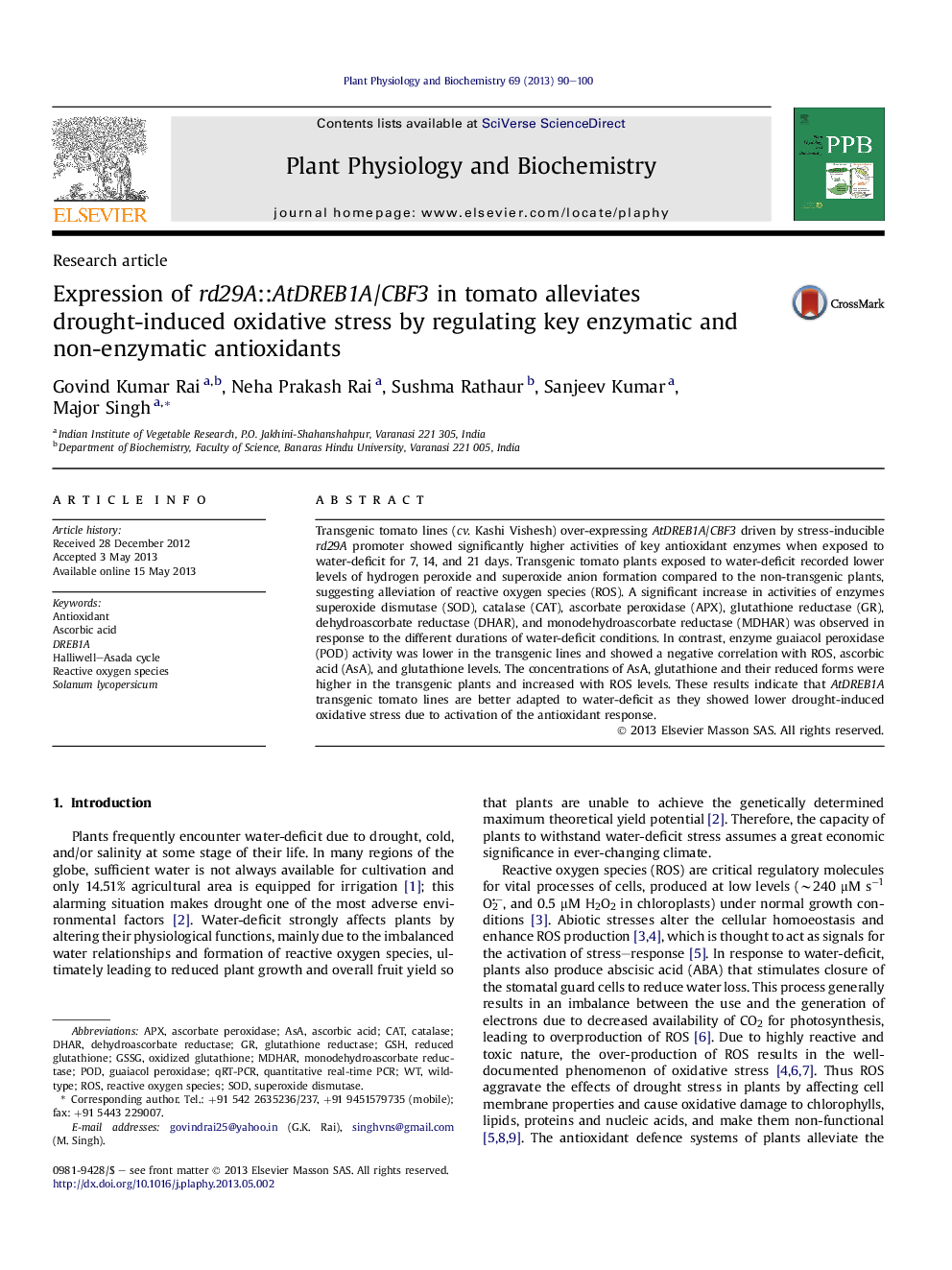| Article ID | Journal | Published Year | Pages | File Type |
|---|---|---|---|---|
| 2014879 | Plant Physiology and Biochemistry | 2013 | 11 Pages |
•AtDREB1A transgenic tomato had elevated activities of SOD, CAT, APX, DHAR, and GR.•Transgenic tomato plants had lower activity of POD.•Higher accumulation of ascorbic acid and glutathione in the transgenic tomato.•The level of superoxide anion and H2O2 was lower in AtDREB1A tomato plants.•Higher oxidative stress tolerance indicates applications in drought affected areas.
Transgenic tomato lines (cv. Kashi Vishesh) over-expressing AtDREB1A/CBF3 driven by stress-inducible rd29A promoter showed significantly higher activities of key antioxidant enzymes when exposed to water-deficit for 7, 14, and 21 days. Transgenic tomato plants exposed to water-deficit recorded lower levels of hydrogen peroxide and superoxide anion formation compared to the non-transgenic plants, suggesting alleviation of reactive oxygen species (ROS). A significant increase in activities of enzymes superoxide dismutase (SOD), catalase (CAT), ascorbate peroxidase (APX), glutathione reductase (GR), dehydroascorbate reductase (DHAR), and monodehydroascorbate reductase (MDHAR) was observed in response to the different durations of water-deficit conditions. In contrast, enzyme guaiacol peroxidase (POD) activity was lower in the transgenic lines and showed a negative correlation with ROS, ascorbic acid (AsA), and glutathione levels. The concentrations of AsA, glutathione and their reduced forms were higher in the transgenic plants and increased with ROS levels. These results indicate that AtDREB1A transgenic tomato lines are better adapted to water-deficit as they showed lower drought-induced oxidative stress due to activation of the antioxidant response.
Graphical abstractFigure optionsDownload full-size imageDownload as PowerPoint slide
